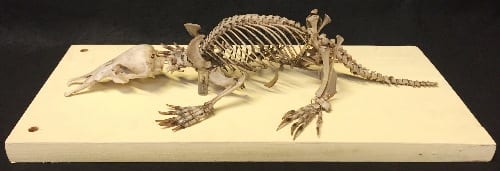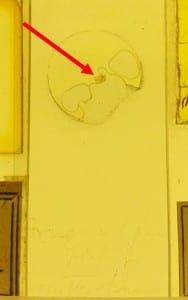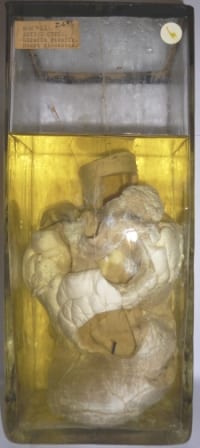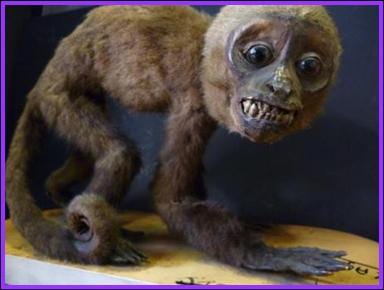Specimen of the Week 338: a tour of the Platypus Skeleton
By Jack Ashby, on 13 April 2018
Anyone who tells you that the platypus isn’t the best animal in the world is a liar. This is my conclusion after nearly fourteen years working in the museum that [probably] has more platypuses on display than any museum in the world*. My first ever Grant Museum Specimen of the Week was a taxidermy platypus, and here I return to this exceptional beast to explore the platypus stripped bare.
The beauty of skeletons is that every lump and bump tells a story. Bone is shaped by the muscles, tendons and ligaments that pull on it, so we can trace the lives of animals as well as their evolutionary histories by asking why skeletons are shaped the way they are.
Allow me to take you on a tour of… (more…)
 Close
Close






